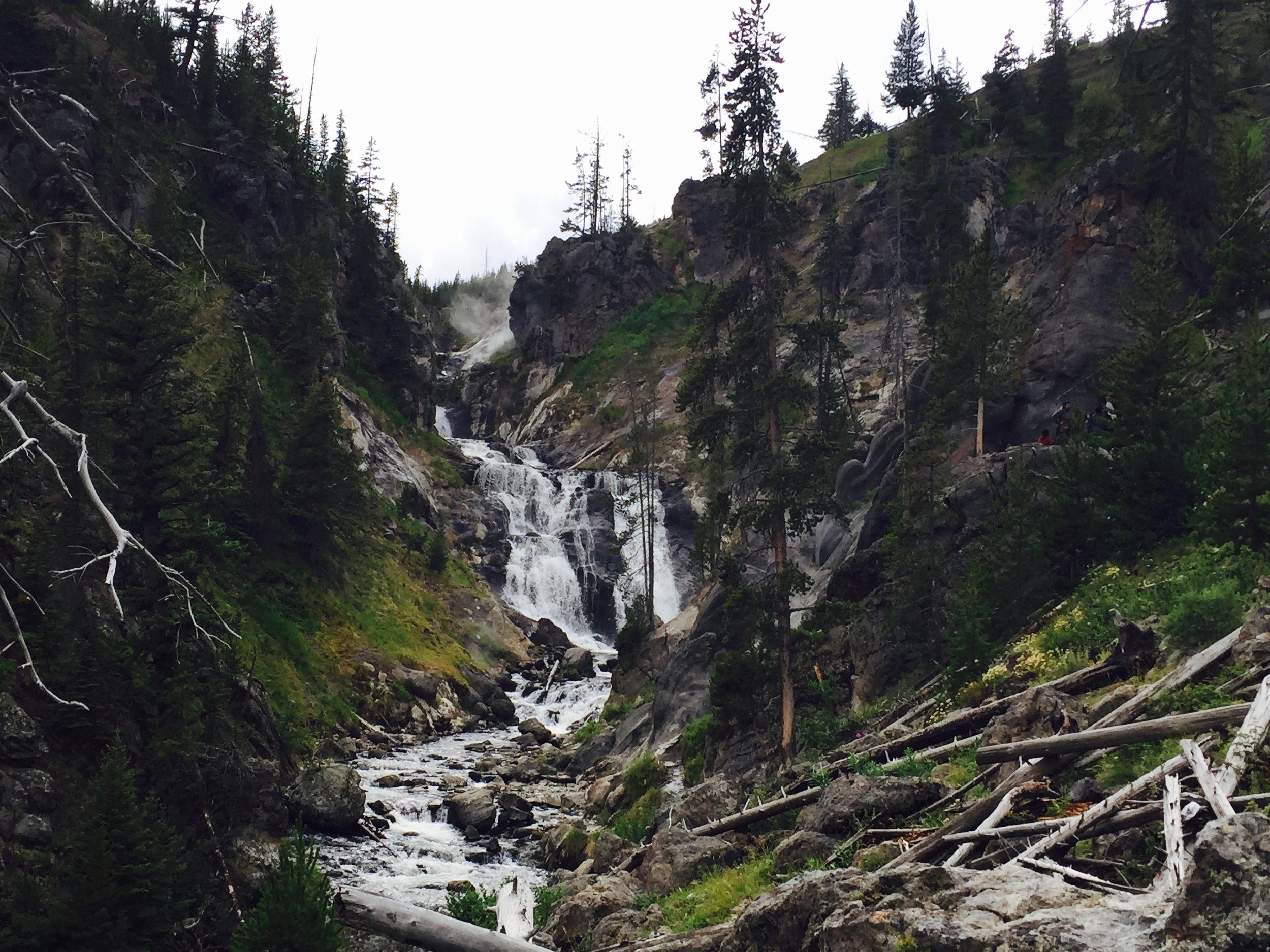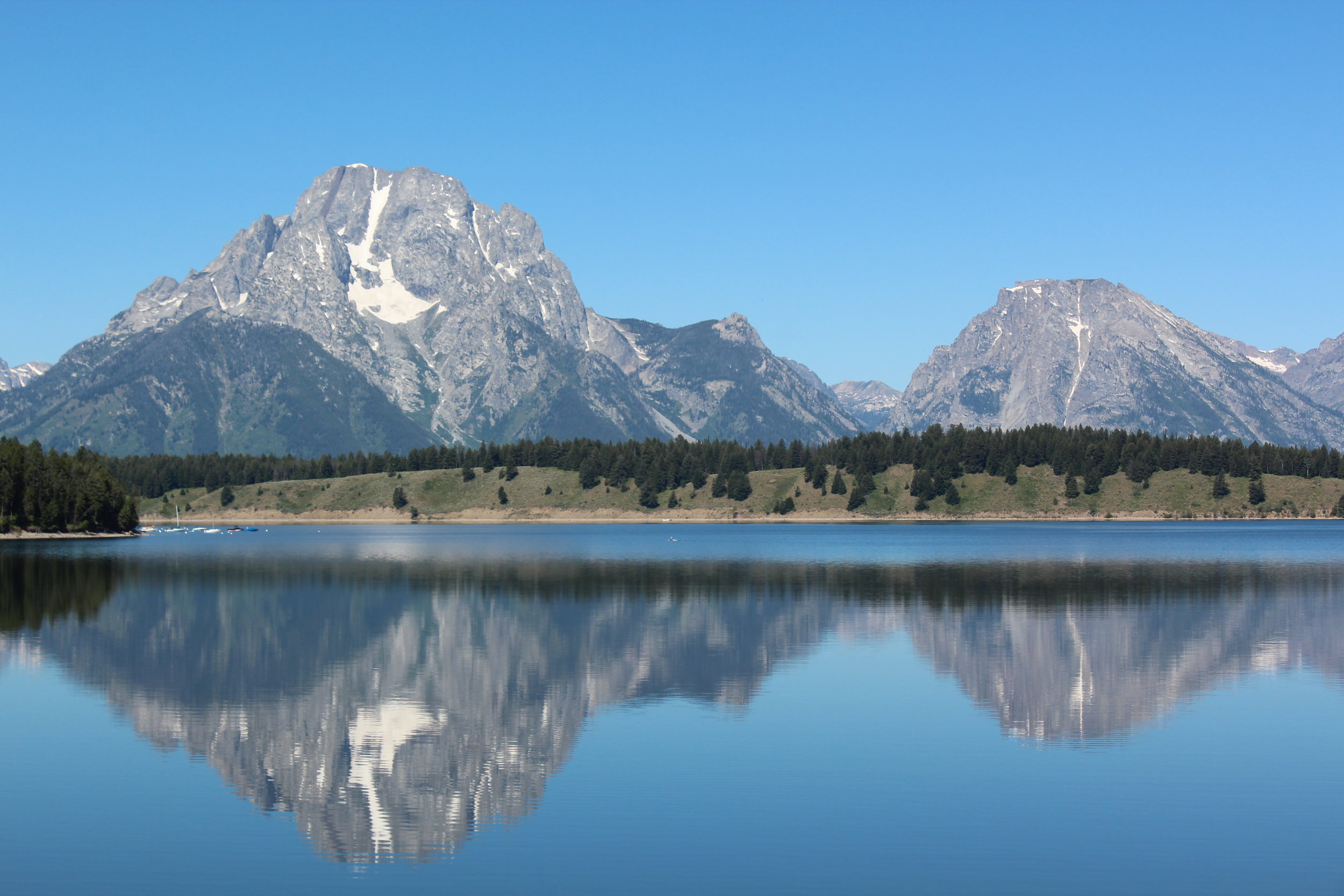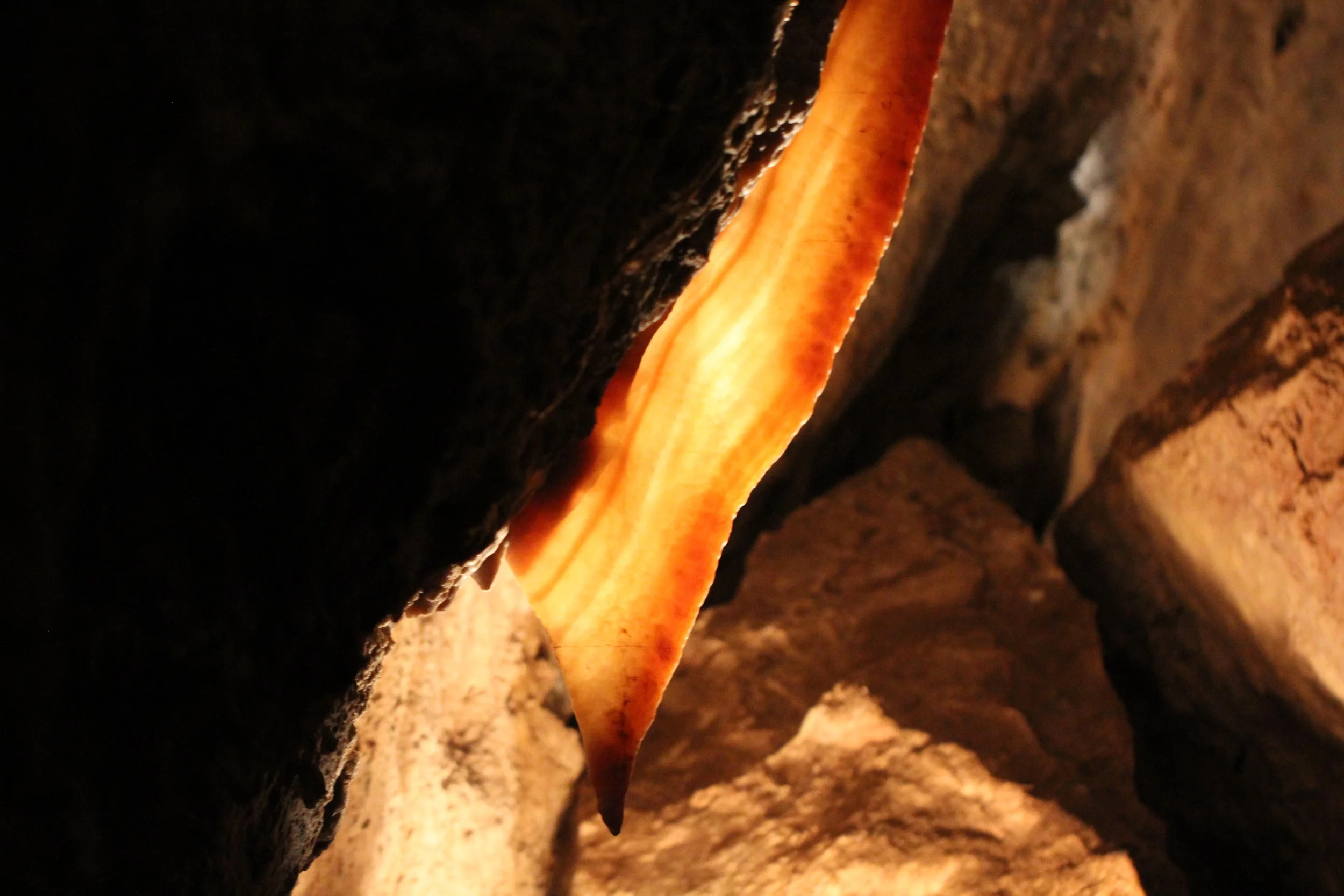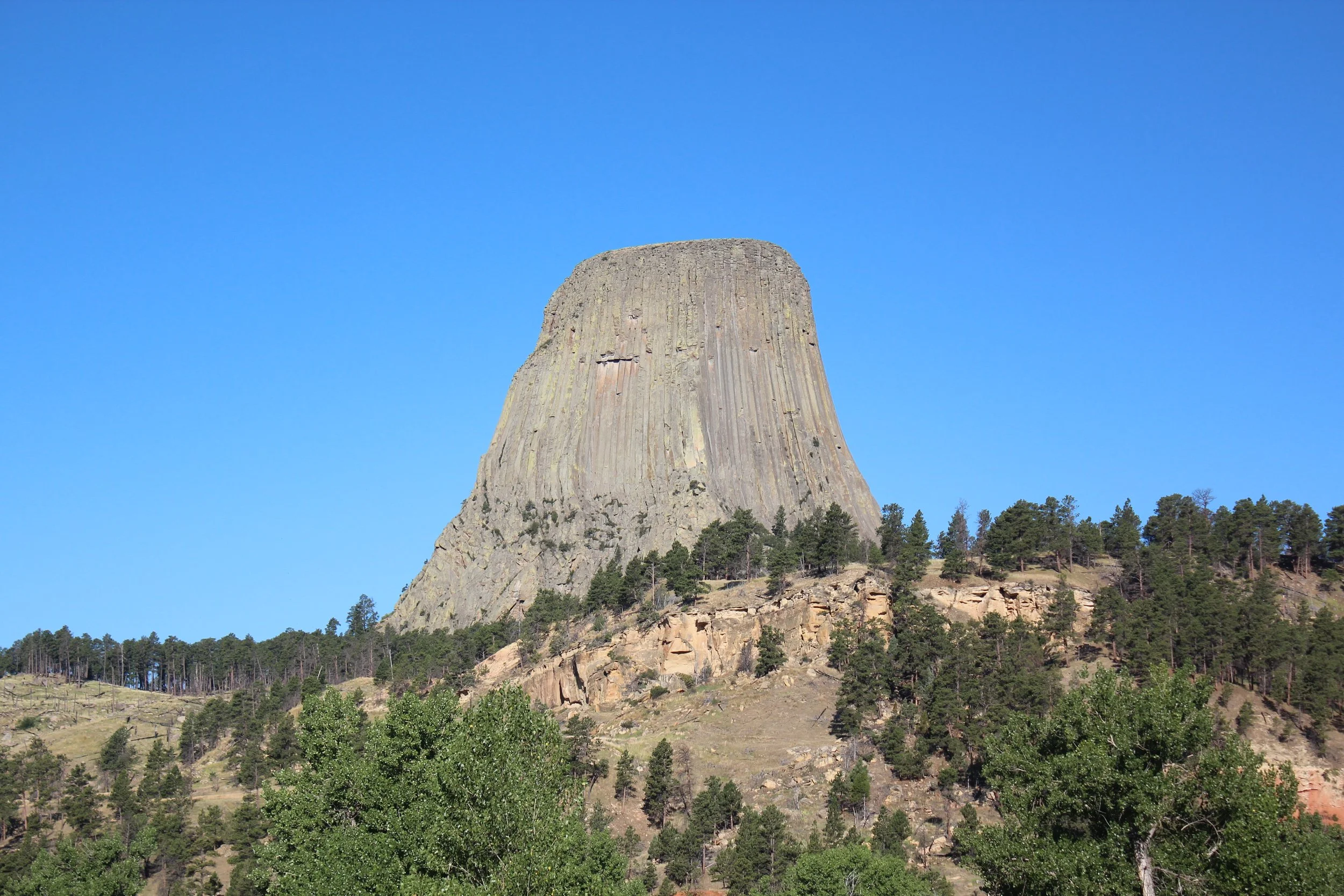An Oldie but a Goodie
Yellowstone East Entrance
If you’re looking for a vacation that you and your family will never forget, consider Yellowstone National Park. If haven’t been to the park, I’m guessing the first image you have in your head is of the Old Faithful geyser. If you’ve been hiking in Yellowstone before, I bet the first thing you think of isn’t an image, but instead the rotten egg smell. Yellowstone is much more important though than just Old Faithful and the smell of sulfur – it is our oldest National Park.
Old Faithful
Yellowstone National Park spans 3, 472 square miles (more than Rhode Island and Delaware combined) and sits on three states (Montana, Idaho, while the majority resides within Wyoming). Interestingly, this geography may have helped establish our National Park System. US Congress may have preferred to protect Yellowstone as a state park, like Yosemite, but it crossed three territorial boundaries. Arguments between Montana and Wyoming occurred, and ultimately Congress decided on a federal solution. President Ulysses S. Grant signed the Yellowstone National Park Protection Act on March 1, 1872. “…the headwaters of the Yellowstone River…is hereby reserved and withdrawn from settlement, occupancy, or sale…and dedicated and set apart as a public park or pleasuring-ground for the benefit and enjoyment of the people.” Thus, began out National Parks – the first in the world of its kind – touted as America’s Best Idea. Today, there are more than 100 nations with over 1,200 national parks or equivalent designations.
Lower Falls
Super Volcano
Yellowstone has the largest collection of hydrothermal features on the planet. This includes geysers, hot springs, mud pots, and fumaroles. These geothermal features provide a visual indicator of the supervolcano below. This supervolcano has had three eruptions of more than 1,000 cubic kilometers of magma – 2.1 million years ago, 1.2 million years ago, and 640,000 years ago. I’m going to stop there and refer you to the visitor centers to learn more about Yellowstone’s unique features as they do a better job of explaining what is happening under the earth’s surface than I can. Our favorite terms from the visitor center’s described Yellowstone as a “Geothermal Hazard” with the potential for a “Runaway Reaction.” It is fascinating hiking in this National Park, where it has the eeriness of a prehistoric time, despite the crowds of people.
Norris Geyser Basin
Yellowstone Lodging
Speaking of the crowds of people, this is not a park to visit for solitude, although there are plenty of trails to go off the beaten paths and the crowds thin away from the boardwalks. More than 4.2 million people visited Yellowstone in 2017. If you are planning a trip to Yellowstone, it’s going to require some pre-work to ensure you have lodging. There are towns near each of the entrances, but due to the size of the park, you’re going to want to stay inside of Yellowstone, which limits options.
We chose to camp. Yellowstone has 12 campgrounds – 5 take pre-registration and 7 are first-come, first-serve. I was very worried about not getting a campsite as we were driving from MN, so we selected Bridge Bay. If you want one of the more secluded campgrounds though, I think you just need to plan to spend the night before in a nearby town and then arrive at the campground early.
Registrations for the pre-registration are 12 months in advance. We booked our campsites for July 2016 in Feb 2016. I wasn’t able to select a specific campsite when I completed the registration form, but there was a field for comments. I stated that I wanted a remote campsite (if that was even possible in a campground of 432 sites…) Yellowstone far exceeded my expectations. We were assigned to campsite 450 in loop J. We could only see two other tents (one on each side of us). There was a forest behind our campsite. It was perfect! There was hardly any traffic on the road, and we even had a visitor in our campsite one morning – a grizzly bear! Luckily, we were still in our tent when he wandered through our campsite – our neighbor told us that evening. My youngest was 4, and at this point whenever we talked about being “Bear Aware” he would remind us that bears didn’t know how to use zippers…
On the comment of bears, the campsites include a bear box unique to each campsite, which is convenient as you can unload your car and store food and cooking equipment inside this box. Living in MN, where this is standard in our state parks up north, I was shocked in Glacier to find there were communal bear boxes. So I’ll list this as a positive for Yellowstone!
One other note regarding camping in Yellowstone – not all campgrounds include showers. There are parking lots though right next to the showers in campgrounds that have them though It was very easy to use them at Fishing Bridge before making supper in the evening.
Things to Do in Yellowstone
Mud Volcano
Yellowstone has 5 park entrances, and the Grand Loop circles through the park connecting the various areas and visitor centers (Norris, Madison, Old Faithful, West Thumb, Bridge Bay, Lake Village, Fishing Bridge, Canyon Village, Tower-Roosevelt, and Mammoth Hot Springs).
This loop can take 4-7 hours to drive without stops – the variation comes from cars pulled over to watch the wildlife. There is a road that cuts through the middle of the loop so you can tackle it in pieces. Big park, lots of options; overwhelming when trying to plan a trip from your laptop. I’d recommend identifying a few things you’d like to do but being mostly flexible about your itinerary. When you get to Yellowstone, stop at one of the Visitor Centers. They have each area of the park broken down into small booklets that they ask a $1 donation for. These booklets have hiking maps, pictures of the most famous geological features, and other useful information that makes the day-to-day planning very easy. Get a few recommendations from the park rangers and enjoy the magic in this park.
Our sons were 4 and 8 years old when we did this trip, so we had lots of short hikes with driving in between and trips to the visitor centers. This is what we did, and although we didn’t come close to exploring the entire park, we felt like we saw a lot of it.
Day 1
Old Faithful and Geyser Loop
Beehive Geyser
We started at the Visitor Center to figure out when then next Old Faithful eruption was, and wandered around the visitor center learning about how the geysers worked and why they were there while we waited. We watched Old Faithful erupt and then hiked Geyser Hill, a 1.25 mile loop. My favorite geyser was Beehive geyser. Several of the geysers were active, and the hot springs were beautiful as well with their stunning colors.
Biscuit Basin and Mystic Falls
Hot Springs at Biscuit Basin
Biscuit Basin is a short drive down from the Old Faithful parking lot. This is a 2/3-mile loop with more geysers and hot spring pools. From this trail, we separated from the crowds and took the Mystic Falls trailhead. This is a 2.5 mile there and back trail. It was nice to get off the boardwalk trails for a while.
Mystic Falls
Paint Pots
Back in the car, and our next stop was Paint Pots. This is a 0.5-mile loop with active geysers, mud pots, thermophiles, and fumaroles – a little bit of everything in a short walk.
Mud Pots
Norris Geyser Basin
Last stop of the day was the Back Basin Loop – a 1.75 mile loop with more active geysers. We completed the southern half of the loop on our way back to the Bridge Bay campground, having to pass by several other stops that we would have loved to take, but it was too late in the day.
Back Basin Loop
Ranger Program
After supper, we walked down to the amphitheater in Bridge Bay and listed to a Park Ranger Program on night life at Yellowstone and light pollution. We’ll be back to this park when our boys are older. The trails are open at night, and the ranger described a very different less crowded scene shared with the animals at the Geyser Hill location.
If you would like to receive notification of future posts, please sign up below. I will not share your email address information with anyone.
Day 2
We back-tracked the loop to hit some areas we missed the previous day.
Mud Volcano
Dragon’s Mouth
This was my favorite geothermal hike that we did in Yellowstone. It’s a 2/3-mile loop including Mud Volcano, Grizzly Fumarole, Dragon’s Mouth Springs, Mud Geyser, and a beautiful view of the valley.
Valley Viewfrom Mud Volcano Trail
Grand Canyon of Yellowstone
Although geysers and mud pots are the typical Yellowstone icons, the Grand Canyon of Yellowstone is the inspiration that started our National Park System. Before Yellowstone was a park, small numbers of Europeans, including mountain men and trappers, wandered through Yellowstone. Their reports of stunning beauty encouraged the first federally funded geological survey. In 1871, 32 people were sent to explore Yellowstone. Included in this expedition were Thomas Moran (a painter) and William Jackson (a photographer). Jackson’s black and white photographs and Moran’s watercolors inspired the nation to protect these places, and persuaded President Grant in 1872 to establish the first National Park. We actually have one of Thomas Moran’s watercolors hanging in our dining room, due to its significance in creating the National Park System. Don’t get lost in the park’s geysers and forget to visit this stunning part of the park while you are here.
Upper Falls
A short (0.2-mile hike) to see at the Brink of the Upper Falls Viewpoint.
Upper Falls
Uncle Tom’s Trail
Uncle Tom refers to above mentioned Thomas Moran. This is a strenuous hike. As with all canyons, going down is easy. The 300+ steps on the way back up were brutal, especially on my husband who carried our 4 year the majority of the way. The view was worth the effort!
Lower Falls
Artists Point
I wouldn’t call this a hike – it was just a short walk to the rim from the parking lot, which was good after Uncle Tom’s Trail. Despite the beautiful view, the crowds were smaller than at several of the geysers.
Artists Point
Yellowstone Weather
One other thought to share, since this surprised us. We traveled to Yellowstone in the middle of July. It was 98 deg F in Theodore Roosevelt Park the night before we arrived. In a trip of extremes, we were greeted in Yellowstone with 30 deg F temperatures and frost on our tent. With elevations 5,282-11,358ft, it can and has snowed in every month of the year in Yellowstone. Check the weather before you travel and make sure you are prepared for the potential of cold weather even in the summertime.
Hot Springs on Geyser Hill
Grand Teton National Park
Less than an hour south of Yellowstone is Grand Teton National Park. If you have an extra day on your vacation, I would highly suggest the short drive. My first thought as I stared at these mountains was Why have I never been here before??? The only caution I would give if you have younger kids is that a lot of the hikes are longer in this park. It took a bit more creativity than normal in a National Park to create an itinerary for a 4-year-old.
Grand Tetons View Near Coulter Bay
Grand Teton Lodging
The campgrounds in Grand Teton are non-reservable, but if you’ve just come from Yellostone, you won’t have a problem finding a site as long as you arrive early. We stated in site 37 of Lizard Creek Campground. This was an extremely quiet campground. There was a short trail across from our campsite down to the water where we spent our evenings after supper throwing rocks and staring up at the mountains.
Lizard Creek Campground
Day 3
Grand Tetons
Inspiration Point
After checking into our campsite and setting up our tent, we made our way to the Coulter Bay Visitor Center. To cut some mileage out of the hike, we paid for a boat ride across Jenny Lake. From there, it was a 2.0-mile round trip hike up to Inspiration Point a small way into the mountains.
Jenny Lake Boat Ride
Inspiration Point
Day 4
Jackson Hole (Teton Village)
We drove through the park and went to the local ski village (Teton Village). At Jackson Hole, we bought a gondola / aerial tram package, and took the tram up Rendezvous Mountain at 10,450ft. Sometimes you need to cheat to get your young kids up into the mountains… We hiked around at the top and ate lunch in the chalet. Then we took up the gondola to a different portion of the mountain.
Jackson Hole - Aerial Tram
Junior Naturalist Program
We spent our afternoon at the Laurance Rockefeller Preserve. We attended a Ranger Program, hiked a little through the meadow and the boys completed their Junior Naturalist badge.
Days 5-6
On our way back to MN, we stopped at Devil’s Tower National Monument, Wind Cave National Park, and Badlands National Park – but I will save those parks for another post.
Other Posts from NatureImpactsUs.com


































For a non-hiker, a day at South Dakota’s Custer State Park could include an early morning drive through the wildlife loop. Then drive along Needles Highway, stopping for pictures at each pullout. Enjoy the afternoon at Sylvan Lake - stroll around it and then rent canoes. Head to Mt. Rushmore before the sunsets and enjoy the lighting ceremony.
Hikers may want to start the morning at wandering around the Sunday Gulch Trail, then cool off at the beach in Sylvan Lake. Enjoy an evening drive around the Wildlife Loop. A second morning could be spent driving along Needles Highway, and parking at the Cathedral Spires trailhead. Scramble up to Little Devil’s Tower, and then hike up to Black Elk Peak. Enjoy the evening at Mt. Rushmore.